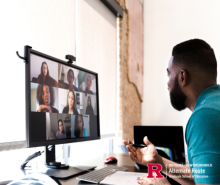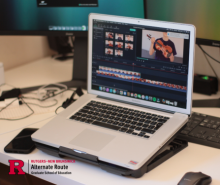Facts and Resources to Better Serve Students with Autism

Educators in 2024 understand neurodivergence better than ever—but there still is a lot of catching up to do.
Years ago, neurological conditions like autism and ADHD came with dangerous stereotypes, including an inability to emote, singular obsessions and aggressive behavior, for example. The truth is that autism looks different in every person, which is why the term ‘neurodiversity’ is often used.
How these conditions show up in one person can be vastly different from another person and it’s important to understand these nuances. Creating an environment where neurodiverse students can thrive is essential to making education equitable to all, and that includes providing resources that cater to these students’ strengths and understanding what is fact and what is myth.
To best support our educators and their neurodiverse students, we’ve outlined autism facts, myths and resources to utilize and share.
Autism facts

The first step in creating a safe and supportive classroom for neurodiverse students is understanding basic autism facts. Throughout the years, there has been harmful information circulated about autism that is best combated through concrete information.
The following is a list of important facts to help individuals better understand autism and how those with autism engage with the world.
Autism is a neurological condition
Autism is a bio-neurological developmental disability that impacts how a person thinks, communicates and engages with others. Neurodiverse individuals, like those with autism and even ADHD, often find communicating and following social cues challenging. Engaging in repetitive behaviors is another common autistic trait, as well as having specific food preferences and becoming hyper-fixated on a particular topic.
Genetics are responsible for autism
While autism does not have one distinct cause, scientists have identified a few key genes that contribute to a person having autism. According to the Mayo Clinic:
“For some children, autism spectrum disorder can be associated with a genetic disorder, such as Rett syndrome or fragile X syndrome. For other children, genetic changes (mutations) may increase the risk of autism spectrum disorder.”
Individuals with autism often have co-morbid conditions
It is common for autistic individuals to have other conditions. Called comorbidities, they include conditions like allergies, asthma, epilepsy and more. While not every autism diagnosis has comorbidities, those with autism have a higher chance of being diagnosed with other conditions. In a 2021 study, researchers found medical comorbidities are more common in children with autism than the general population.
You can get diagnosed at any age
Autistic traits often appear before the age of three, and researchers are learning more about more nuanced traits that can easily be missed. Now that individuals know what to look for in their behaviors, autism rates have tripled. With more information readily available, adults who were overlooked as children are now exploring resources and seeking diagnoses from their doctors.
Autism myths

In 2021, singer Sia released the movie, Music. Marketed as a feel-good story about an autistic adolescent, the movie received criticism for misrepresenting the autistic experience. By not involving autistic individuals, doctors or caretakers, Sia created an autistic character built on stereotypes and myths, upsetting autistic individuals and their allies.
Media like Music is why autism is often mischaracterized, contributing to widespread ignorance. The following myths are ones that individuals within the autistic community have been fighting to dispel.
Vaccines cause autism
Misinformation in the early 2000s is why the myth that vaccines cause autism is so prevalent today. In February 1998, the medical journal Lancet published a study that connected the measles, mumps and rubella vaccines to autism. The article was eventually retracted by Lancet, with 10 out of the 13 authors withdrawing their work. Countless studies have emerged since to disprove this myth.
It is OK to restrain someone if they have a meltdown
One of Music’s biggest criticisms was a scene where an autistic character is restrained during an outburst. It is important to note: Never use restraints on an individual. Using restraint as a way to subdue another human is dangerous for everyone involved and potentially deadly for the person being restrained. Instead, the best way to manage a meltdown is to help the individual feel safe and secure, so give them space to self-regulate while sticking with them, remind them they are safe and ask if they consent to gentle physical touch or comforting items like blankets.
Autism is a mental health disorder
While autism and mental health disorders are non-communicable conditions, they are very different. Mental health disorders are defined by the brain’s mental processes (thinking and emotions), while neurological disorders are defined by the physical brain and diseases that arise from it. For example, a psychiatrist is an expert in mental health and a neurologist is an expert in neurology. For individuals seeking an autism diagnosis, a neurologist is the best option.
Autism is a mental disability
Like their neurotypical counterparts, autistic individuals have unique talents and interests and are often not hindered by an autism diagnosis. Studies have found autistic individuals often excel in creative endeavors, have strong focus and memory, as well as increased efficiency, to name a few positive traits. For educators, identifying an autistic student’s strengths and leaning into them can transform how these students learn.
Classroom and professional development resources

To best support your autistic and neurodiverse students, we’ve gathered our favorite resources for our educator friends.
23 Zones of Regulation Activities to Help Kids Manage Their Emotions
These activities are designed for younger students in mind, teaching them the zones of regulation through colors. Rooted in cognitive behavioral therapy, implementing these activities can lead to improved emotional control, sensory regulation, self-awareness and problem-solving skills.
30 Must-Try Sensory Room Ideas for Schools
Creating engaging sensory experiences can help autistic students regroup and refocus. This list includes sensory ideas for a wide range of ages and encourages educators to seek out grant opportunities for sensory room items that cost a little bit more.
30 Activities, Teaching Strategies and Resources for Teaching Children with Autism
Waterford gathered 30 easy-to-execute games, calming activities and effective teaching strategies that teachers can use as a go-to online resource. In addition to this useful page, Waterford has a diverse resource page for educators navigating teaching in 2024.
All My Stripes: A Story for Children with Autism
Written by Shaina Rudolph, All My Stripes helps younger students connect autism with concepts they already understand. The story follows Zane, a zebra who is worried about his ‘autism stripe’ and how it makes him different from his peers. His mother shows him all the positive qualities that come with his stripe, helping Zane feel more confident.
This website is dedicated to supporting autistic students and the incredible people who teach them. Browse the free resources, read the informative blog, learn best practices through the podcast or shop for affordable classroom materials. Autism Classroom Resources also has a Special Educator Academy, which provides tools and community for special education teachers.
Foundations for Divergent Minds
Foundations for Divergent Minds offers resources and practical knowledge about neurodivergence for therapists, teachers and parents. Depending on their existing knowledge, educators can take a course or receive a personalized consultation to help with classroom and student needs.
Stephanie, or Mrs. D, understands elementary special education and helps teachers adapt lessons so all students are served equitably. Her website hosts adapted books, lesson plan packs, core vocabulary lessons and more educators can purchase and download.
NEA Teaching Students with Autism
The National Education Association offers this guide for teachers who want to support their autistic students and strengthen relationships with parents and caregivers. In this guide, educators discover how to collaborate as a team, plan individualized support and adapt lessons to meet students where they are.
Organization for Autism Research (OAR) compiled this resource for educators who want to better support their autistic students. Specific to middle and high school teachers, OAR’s Curriculum in a Box is a professional development kit that helps teachers understand autism and learn evidence-based strategies to implement in the classroom.
Over the years, the Rutgers Alternate Route blog has highlighted education best practices and provided resources for all educators, not just the ones we serve in New Jersey. Special education resources are valuable to our audience, which is why we focus on crafting informative content educators can bring to their classrooms. Some special education-specific blogs include:
11 Articles to Help New Teachers Build Inclusive Classrooms for Special Education Students
29 Resources Special Education Teachers Use to Help Students Learn
39 Peer-Recommended Resources for Special Education Teachers
ADHD Facts and Resources to Better Serve Your Students
How New Teachers Can Support Special Education Students in General Education Settings
Tips for New Teachers Who Want Their Special Education Students to Thrive
Supporting Autistic Students in the Classroom
Autism Awareness Centre Inc. offers this informative webpage that breaks down focus areas for educators working with autistic students. Predictability through a structured environment, the importance of visual supports and incorporating student interests in lessons are all ways to better support neurodivergent students.
If you’re considering following your dream of teaching, Rutgers Alternate Route can offer you the support and training you need to succeed. Be sure to follow Rutgers Alternate Route on Twitter and sign up for Alternate Route’s monthly newsletter for more information and stories from the field of education.

 Heather Ngoma has over 25 years of experience collaborating with educators across New Jersey to drive education innovation. She currently serves as the Director of the Rutgers-GSE Alternate Route Program in the Department of Learning and Teaching, a program which helps career changers, recent college graduates, and other aspiring education professionals become licensed teachers in New Jersey. Follow her on Twitter @heatherngoma.
Heather Ngoma has over 25 years of experience collaborating with educators across New Jersey to drive education innovation. She currently serves as the Director of the Rutgers-GSE Alternate Route Program in the Department of Learning and Teaching, a program which helps career changers, recent college graduates, and other aspiring education professionals become licensed teachers in New Jersey. Follow her on Twitter @heatherngoma.





